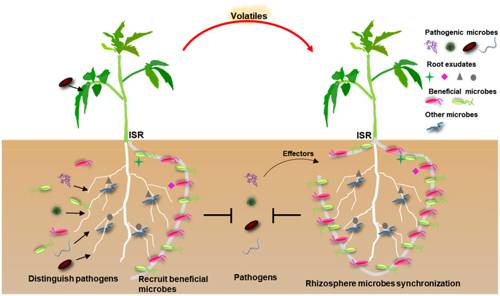
FAQ About Indoor Plant Pathogen Resistance Development

What are common pathogens that affect indoor plants?
Indoor plants are commonly affected by fungal pathogens, such as powdery mildew, root rot, and botrytis. Bacterial diseases like leaf spot and viral infections such as mosaic virus can also pose significant threats. Recognizing and understanding these pathogens is essential in improving plant resistance.

How can I identify if my indoor plants are infected by pathogens?
Signs of infection in indoor plants include yellowing leaves, spots or patches, wilting, moldy growth on soil or foliage, and stunted growth. Observing these symptoms can help determine the type of pathogen affecting the plant and guide appropriate treatment measures.

What genetic traits contribute to pathogen resistance in indoor plants?
Genetic traits that contribute to pathogen resistance include the ability to produce antifungal compounds, thicker cell walls to prevent infections, and certain genes that are directly involved in recognizing and responding to pathogens. These traits can vary between plant species and varieties.

Can selective breeding improve pathogen resistance in indoor plants?
Yes, selective breeding is a method used to enhance pathogen resistance in indoor plants. By choosing parent plants that exhibit strong resistance to specific pathogens, breeders can develop new varieties that inherit these resistant traits, thus strengthening future generations against diseases.

What role does cultivating environment play in pathogen resistance for indoor plants?
The cultivation environment plays a significant role in pathogen resistance. Factors such as light, humidity, temperature, and ventilation influence the susceptibility of plants to pathogens. Proper environmental control can reduce stress and enhance the plant's natural defenses against diseases.

Are there any resistant plant varieties I can choose for indoor gardening?
There are many resistant plant varieties available for indoor gardening. For instance, certain cultivars of succulents, cacti, and ferns are bred for their natural resistance to common indoor pathogens. Researching and selecting these varieties can lead to a healthier indoor plant collection.

How does soil health impact pathogen resistance in indoor plants?
Healthy soil is crucial for pathogen resistance. Well-aerated soil rich in microbes supports plant health and helps suppress pathogens. Using quality potting mixes and incorporating organic amendments like compost can significantly boost soil health and enhance plant resistance.

What are some breeding practices to enhance disease resistance?
Breeding practices to enhance disease resistance include crossbreeding resistant varieties, utilizing marker-assisted selection to identify resistant genes, and conducting field trials to test resistance in various environmental conditions. These techniques help develop plants with improved resilience to pathogens.

How can I use biotechnology in developing pathogen-resistant indoor plants?
Biotechnology can play a role in developing pathogen resistance by employing genetic engineering techniques to introduce resistance genes into plants. Additionally, CRISPR technology allows for precise editing of existing genes to enhance a plant's natural resistance to specific pathogens.

What is the importance of plant diversity in combating pathogens?
Plant diversity is vital in combating pathogens as it reduces the risk of widespread disease outbreaks. A diverse plant collection can limit the spread of pathogens, as different species and varieties have varying levels of susceptibility and resistance, thus acting as natural barriers against infections.

How can I encourage natural resistance in my indoor plants without genetic modification?
Encouraging natural resistance can be achieved through practices such as crop rotation, interplanting different species, promoting beneficial microorganisms in the soil, and ensuring optimal growth conditions. These strategies help plants build their natural defenses against pathogens.

What is the role of mycorrhizal fungi in plant pathogen resistance?
Mycorrhizal fungi form symbiotic relationships with plant roots, promoting nutrient uptake and enhancing disease resistance. These beneficial fungi help strengthen the plant's immune system by outcompeting pathogenic fungi and improving the plant's overall health and vigor.

Can regular pruning help in developing pathogen resistance?
Regular pruning can help manage pathogen resistance by removing diseased or dead plant parts that may harbor pathogens. This reduces the source of infection and improves air circulation, which can prevent the growth and spread of many diseases.

How do indoor plant pathogens spread?
Indoor plant pathogens can spread through contaminated soil, water, gardening tools, and by direct contact between infected and healthy plants. Airborne spores, pests, and improper sanitation practices also contribute to the dissemination of infectious agents.

Are chemical treatments effective against indoor plant pathogens?
Chemical treatments, such as fungicides and bactericides, can be effective in controlling indoor plant pathogens but should be used as a last resort due to potential toxicity and environmental impact. It's important to use these treatments responsibly and follow guidelines to minimize harm to plants and humans.

What are some natural methods to control indoor plant pathogens?
Natural methods of control include using neem oil, baking soda sprays, and promoting beneficial insects like ladybugs that prey on disease vectors. Improving air circulation and maintaining cleanliness are also effective strategies to prevent pathogen growth.

How does stress affect an indoor plant’s susceptibility to pathogens?
Stress from factors like improper watering, low light levels, or nutrient deficiencies can weaken a plant's immune system, making it more susceptible to pathogen attacks. Ensuring optimal growing conditions is crucial to reduce stress and enhance resistance against infections.

Is it possible to entirely prevent pathogens in indoor plants?
While it is impossible to entirely prevent pathogen presence, steps can be taken to significantly reduce their impact. Establishing strict hygiene practices, selecting resistant plant varieties, and maintaining an optimal growing environment are key strategies to minimize the risk of infections.

What are biocontrol agents and how do they help indoor plants?
Biocontrol agents are beneficial organisms or substances that help control plant pathogens. These include beneficial bacteria, fungi, and predatory insects that naturally suppress pathogen populations, providing an environmentally friendly alternative to chemical treatments.

How do I choose the right resistant variety for my indoor space?
Choosing the right resistant variety involves considering the specific pathogens prevalent in your area, the light and space available, and your personal aesthetic preferences. Researching plant care requirements and resistance ratings will guide you in selecting suitable resilient plants for your indoor space.
